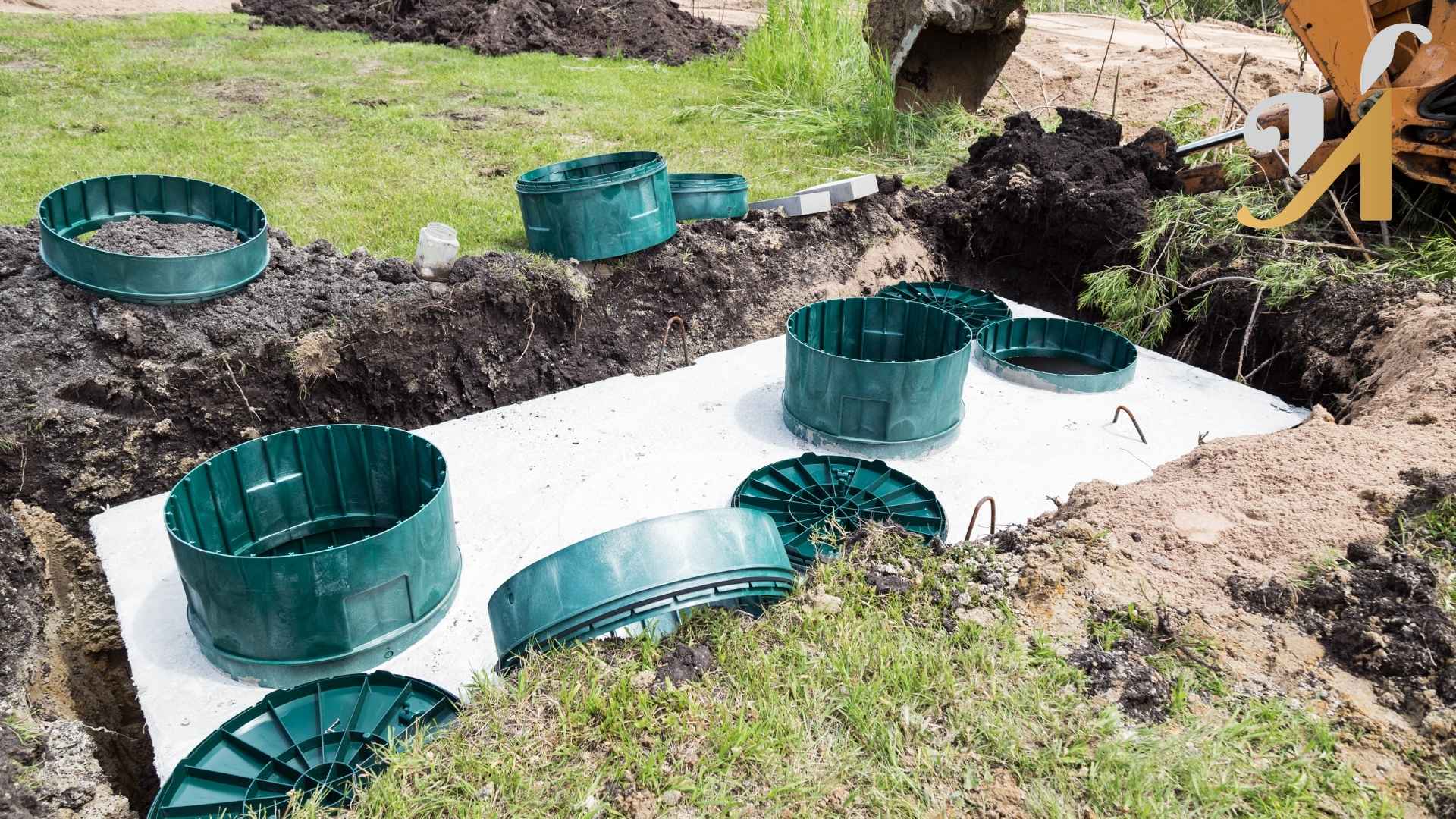When planning your custom home, one of the biggest decisions is whether to connect to a municipal sewer line or install a septic system.
Septic systems can be more affordable long term and give you independence from city services, but they also come with responsibilities like routine maintenance and potential environmental concerns.
According to the U.S. Environmental Protection Agency, more than 20% of American households rely on septic systems, showing just how common they are for new builds in areas without easy sewer access.
At Hafsa Building Group, we understand that every choice in your home design, down to how your wastewater is managed, affects comfort, cost, and sustainability. Since 2017, we’ve built homes with precision, quality, and transparency, making sure that each decision supports your long-term vision.
Key Takeaways
- Septic systems can save money long term and provide independence from municipal sewer services, but require consistent homeowner responsibility.
- Regular maintenance and pumping are necessary to prevent failures, odors, and environmental risks like groundwater contamination.
- Installation costs and site requirements can be significant, making soil conditions and local regulations critical factors in the decision.
What Is a Septic System and How Does It Work?
A septic system is a private wastewater treatment setup designed for homes that are not connected to a city sewer line. Instead of sending waste through municipal pipes, everything flows into a buried tank on the property. Inside the tank, solids settle at the bottom while liquids flow out into a drain field, where the soil naturally filters and treats the water.
A typical septic system has two main parts:
- Septic Tank: Holds wastewater, allowing solids to separate and decompose naturally.
- Drain Field (Leach Field): A network of pipes that disperses liquid waste into the soil for filtration.
Even when sewer access is possible, some homeowners prefer septic systems for their independence and potential long-term cost savings.
4 Pros of a Septic System for Custom Homes
For many homeowners, septic systems offer practical and financial advantages that make them an attractive option when building a new home.
1. Lower Long-Term Costs
While the upfront investment in a septic system can be significant, long-term expenses are often lower compared to paying monthly sewer bills.
Once installed, the primary costs are maintenance and occasional pumping, which typically runs $200 to $500 every 2–5 years. Over decades, this can result in substantial savings for families who plan to stay in their custom home.
2. Independence from Municipal Sewer Lines
A septic system allows your home to operate independently of city utilities. This is especially beneficial for properties outside urban areas where sewer connections may be unavailable or expensive to extend. Instead of relying on municipal infrastructure, you control your own wastewater system right on your land.
3. Durability and Lifespan
When properly maintained, septic systems can last 20 to 40 years. This longevity means that with regular care, such as inspections and pumping, your investment can serve your family for decades.
Many homeowners appreciate the reliability of a well-installed system, especially if they plan to pass their custom home down to the next generation.
4. Eco-Friendly Benefits
Because septic systems treat wastewater naturally through soil filtration, they can be less energy-intensive than municipal sewage plants. With proper care, they recycle water back into the ground safely, helping recharge local groundwater.
For environmentally conscious homeowners, this makes septic systems a sustainable choice, as long as maintenance is consistent.
4 Cons of a Septic System for Custom Homes
Septic systems can be reliable for many families, but they also come with downsides that homeowners should understand before choosing them for a custom build.
1. Upfront Installation Costs
The initial cost of installing a septic system is often much higher than simply connecting to a nearby sewer line.
Homeowners typically spend between $3,000 and $13,000, with most paying around $8,000. More advanced engineered systems can reach $20,000 or more, making it a significant upfront investment compared to municipal sewer hookups.
2. Routine Maintenance and Pumping
Unlike sewer systems, which are maintained by the city, septic systems place responsibility directly on the homeowner. Tanks must be pumped every 2 to 5 years, costing between $200 and $500 per visit.
Skipping this routine maintenance can lead to backups, foul odors, or even full system failure.
3. Risk of Groundwater Contamination
Improperly maintained or aging septic systems pose a risk to both the environment and household health. The U.S. Environmental Protection Agency (EPA) warns that failing systems can release bacteria, viruses, and excess nutrients into groundwater, potentially contaminating nearby wells, rivers, and lakes.
For families relying on private wells, this risk is especially concerning.
4. Space and Soil Limitations
Septic systems require a suitable site for both the tank and the drain field. Based on data from the EPA, certain soil conditions, such as clay-heavy soil or areas with high groundwater tables, may limit functionality unless costly adjustments are made.
Local building codes may also restrict where and how a septic system can be installed, narrowing options for some properties.
What is the Difference Between a Septic System and a Municipal Sewer?

When building a custom home, one of the most important utility decisions is whether to connect to a municipal sewer or install a septic system. Both options come with advantages and drawbacks in terms of cost, convenience, and environmental impact.
| Category | Septic System | Municipal Sewer |
| Installation Cost | According to HomeAdvisor, installation averages $3,610 to $12,403, with most homeowners paying about $8,003. Advanced systems can exceed $20,000. | Sewer hookup fees vary widely, but HomeGuide notes they usually range from $1,500 to $5,000, depending on distance from existing lines. |
| Ongoing Costs | As reported by The Spruce, septic tanks require pumping every 2–5 years, costing $200–$500 per service. | Based on data from the EPA, municipal sewer users typically pay monthly utility fees, which add up year after year. |
| Maintenance | Homeowners are responsible for all maintenance, inspections, and repairs. | Maintenance is handled by the city or utility provider, reducing homeowner responsibility. |
| Lifespan | Properly maintained septic systems can last 20–40 years, according to the EPA. | Sewer systems are designed to serve communities indefinitely, though occasional service disruptions can occur. |
| Environmental Impact | If managed correctly, septic systems filter water naturally through the soil. However, the EPA warns failing systems can contaminate groundwater. | Municipal systems treat wastewater at centralized plants, which can reduce contamination but often require more energy. |
Environmental Impact: Septic Systems and Local Regulations
Beyond cost and convenience, septic systems also have implications for the environment and public health. For families building custom homes, understanding these effects and the regulations that govern them is important.
Sustainability Benefits
When properly maintained, septic systems can be environmentally friendly. Septic systems filter wastewater naturally through the soil, replenishing local groundwater and reducing the burden on centralized treatment plants. This decentralized system can be more energy-efficient and sustainable compared to municipal sewer networks.
Risks of Improper Maintenance
The environmental benefits are lost, however, if systems are neglected. Failing septic systems can release harmful bacteria, viruses, and excess nutrients into groundwater and nearby waterbodies. This contamination can harm ecosystems and pose risks to drinking water sources, especially for properties with private wells.
Local Regulations in North Carolina
In North Carolina, septic systems are regulated by local health departments under state law. New systems require a site evaluation to make sure the soil and property can safely handle a drain field.
Permits are mandatory for installation, and homeowners must follow state guidelines for operation and maintenance. These rules are in place to protect both families and the surrounding environment.
Balancing Responsibility and Reward
For eco-conscious homeowners, septic systems can be part of a sustainable lifestyle, but only if paired with consistent care. Regular pumping, inspections, and following local regulations help prevent contamination while allowing families to enjoy the independence that septic systems provide.
Ready to Design the Right Home System?
Deciding whether to install a septic system or connect to municipal sewer is about building a home that works for your lifestyle, budget, and long-term vision. With the right planning, either option can provide comfort and peace of mind for decades to come.
At Hafsa Building Group, we guide families through these important decisions as part of our commitment to building custom homes to the highest standards of quality. Since 2017, our team has combined craftsmanship, transparent communication, and industry experience to bring dream homes to life across North Carolina.
If you’re exploring septic systems, we’re here to help turn your vision into reality. Visit our contact page to start planning your custom home with Hafsa Building Group today.






